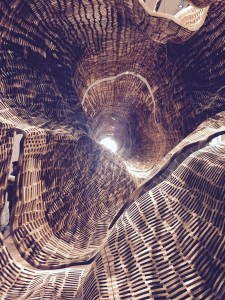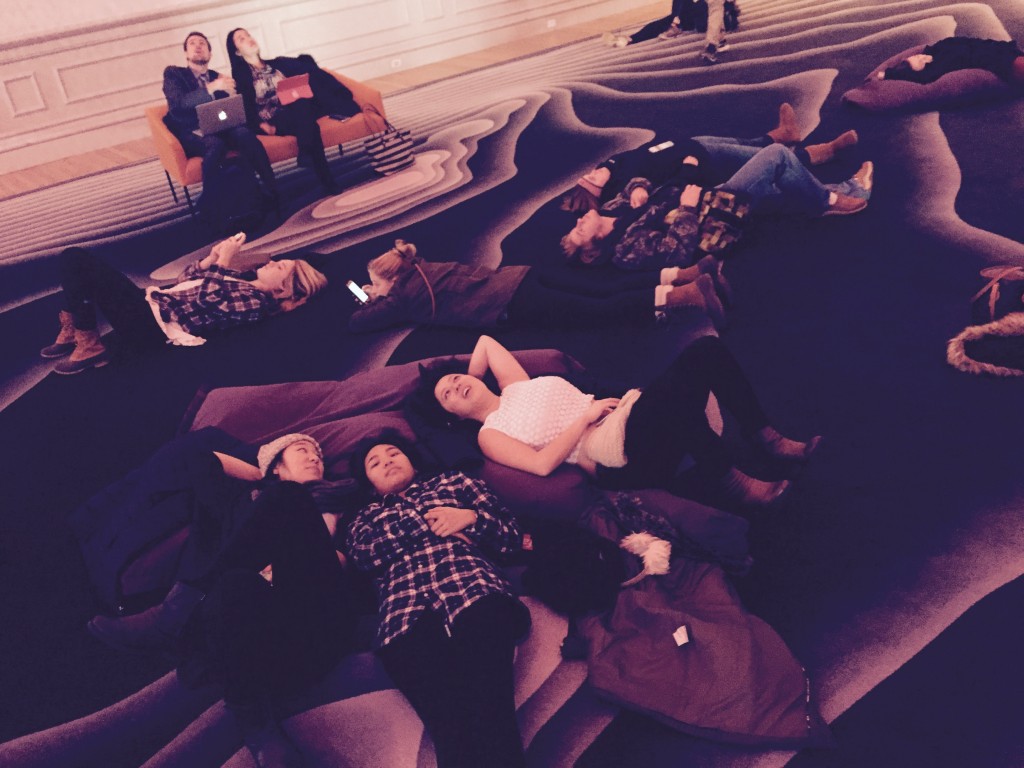I admit: I’m the type of person who sees every New Year as a chance to reboot, revisit and refresh.
And this year, 2016, I want to try and sustain a yearlong exploration of wonder.
Part of the reason for that is pretty straightforward: on January 1, I officially became a partner in a global design studio that helps communities reimagine learning at the intersection of space, culture and story.
Our name? WONDER, By Design.
But part of it is also a desire to wrestle with some questions my colleagues and I want to understand more deeply:
- If wonder is to learning as carbon is to life, then what are the neurochemical underpinnings of wonder itself?
- In what ways does our capacity for wonder help explain what is most essential to what shapes and drives us as human beings?
- What blocks our ability to wonder widely about the world? What gets us unblocked?
You can imagine my excitement, then, when I saw that the Renwick Gallery, a century-old museum in Washington, D.C. once described as the “American Louvre,” had recently undergone its own reboot – a literal, massive, two-year renovation – and was reintroducing itself to the public by having its first new exhibit transform the entire building into an immersive, multisensory work of art.
The inaugural exhibit’s name? WONDER.
So, last week, just before a massive blizzard ground the nation’s capital to a halt, I decided to visit on a random weekday morning.
A mixture of locals and tourists, old and young, prepared to move their way through the different exhibits and rooms with a hushed reverence. A sign on the wall, however, reminded us not to let any initial silence be mistaken for any required sense of formality: “Photography encouraged,” it read.
I walked into the first room, where I found a termite mound of index cards – a landscape of detritus, reconstituted into something both foreign and recognizable.
I squinted to see through a diaphanous indoor rainbow, made entirely of string.
Strangers and I peered at one another though a round opening in a human-sized bird’s nest – two sides of the same mirror.
And I walked alongside a Plaster Paris cast of a massive tree laying on its side, its bark recreated by the careful stitching together of small wooden rectangles, its empty center providing a portal through which to view . . . what exactly? The other end? The eternal? The unnameable?

What drives us as human beings to spend thousands of hours making a plaster cast of a living tree? What is sparked in us when we experience it here, in this distinctly man-made space? And when I tell you that in two years the cast will be laid at the base of the actual tree it was based on so that it can gradually decompose and become part of the forest floor, what does that information make you feel?
Then I walked to the second floor of the exhibit. Other museumgoers were scattered on their backs underneath a giant, colorful, undulating map of the energy explosion that caused the Tohoku earthquake and tsunami in 2011. I wandered into a magenta-hued room whose walls were covered by constellations of actual insect bodies, impossibly large. And in each room I jotted down framed quotations from people across the past 1,000 years who have wondered about wonder.
“Wonder – is not precisely Knowing And not precisely Knowing not – A beautiful but bleak condition He has not lived who has not felt.”
“Man is surprised to find that things near are not less beautiful and wondrous than things remote.”
And my personal favorite – “It is not understanding that destroys wonder; it is familiarity.”
I thought about that one as I returned to the hollow tree, and stared again through its open center. All along the outside, the tree’s branches jutted out like natural antennae, thin wires suspending it at eye-level.
This, I realized, was what this exhibit had led me to wonder about: What suspends us? What do we suspend?
Over 800 years ago, St. Albertus Magnus offered his own take on those questions. “Wonder,” he said, “is defined as a constriction and suspension of the heart caused by amazement at the sensible appearance of something so portentous, great, and unusual that the heart suffers a systole.”
It’s not an answer, just another layer to peel off and examine. I hope you’ll join me in the search, and add your own thoughts, in the months ahead.

Recent Comments